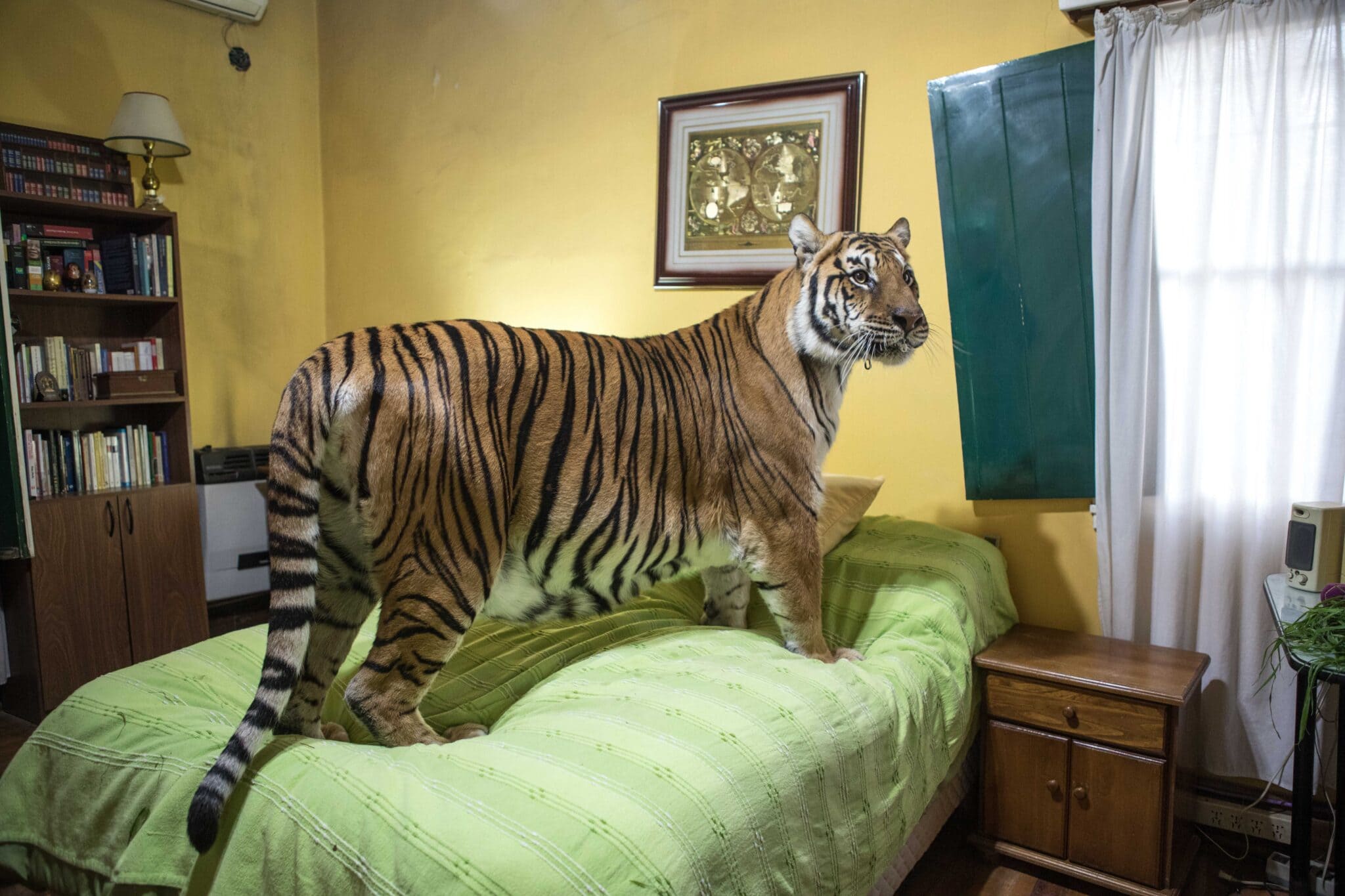
Nature as construction
A decade ago, while working in El Calafate (Argentina), Sofía López Mañan found a condor feather. It was huge, it was in the middle of the valley. “It looked like it had just fallen,” she says. Later, in a ceremony, she wanted to donate it. But a grandmother said to her: “What are you doing? That pen fell to you, it came to tell you something”. In September, Sofia recorded the largest release of condors in the country, in Río Negro. Now, she wants to understand the cosmology that surrounds them. As an artist and documentary photographer, Sofía studies naturalism and mycology and raises mushrooms.
You did a survey on social networks in which you asked what was natural and what was not while sharing images of Bambi, indigenous peoples, a tiger on a bed, a crowd in the city. What did the people answer?
One said, “what the human does not intervene is natural.” We have an idea of nature as pristine and ‘untouched’. So, do you touch it with your culture? Another said, “without damage”. What if the volcano throws lava? When I shared Adam and Eve one hundred percent said it was nature. We think we are evolutionists, but the truth is that we are creationists.
We are in an Anthropocene era, we are the greatest modifiers on this planet. We think of isolated objects: “the universe”, “the human”, “nature”, “the mate“. Philosopher Timothy Morton argues that the idea of climate change is presented as a hyper object in itself. So if you start the car’s engine, you are not thinking ‘oops, this is affecting me’.
Sofía López Mañan
I remember when the Buenos Aires Zoo closed and the animals were taken away. Many of us think of “a Noah’s Ark.” Where does that idea come from? We imagine “releasing the elephant in its freedom”, in that mystical, romanticized, and idealized thing, according to which there would be harmony between all species. The other day, in class, they told me “if there was harmony there would be no evolution.”
I got into the basement of Fauna Nación and began to register taxidermy, animal trafficking. Suddenly I thought “I am doing that again that the problem is always the outside, the bad one”. I named the project ‘Nature is dead’. Some images exist, others do not. I play with desire and fantasy, with how we look and how we build. The term ‘nature’ ranges from a plant, a stream or ‘what is natural’, ‘what is good’, is like God. I decided to make a project as chaotic as the word itself.
Sofía López Mañan
The Andean condor is scarce in northern South America and Patagonia. The Andean Condor Conservation Program takes care of them. What is it like to work with the subject?
I made a mini-documentary about psycho-magical things that happened. The condor became family to me. When the chicks are born much of family is produced. A condor lives almost like a human, between 75 and 80 years. The work that the ‘condoreros‘ do is very meaningful: they get involved, they ask the mountains for permission. The moment of liberation is impressive, people faint. The condoreros are in good and bad times. There are a lot of deaths and falls, mainly due to pesticides or the use of lead.
When they manage to rescue them to cure them, from June to September they are in La Voladora, a large cage where they begin to feel the air, they acclimatize. In September, the cage opens. They are released in small groups, among themselves they learn to fly. It is a work in a mini place, in the middle of nowhere. It is no coincidence that it happens in September, there is a window of good weather so that they can recognize where is food. At night they take a leg to learn. Then the cold appears and then they already have to know how to handle themselves.
I am interested in cosmogony and the value condor has for Andean cultures. They gave me a National Geographic grant for ‘Condors and Cosmovision’. For example, the name ‘Hanan’, for the (misnamed) ‘tehuelches’ means “the one who flies high”. It is like the messenger, who takes our souls to heaven. The Mapuches left their bodies to be eaten by the condors, as a guide for souls.


